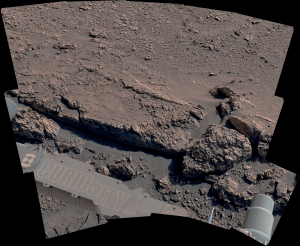Cassini Significant Event Report
For Week Ending 06/30/00
The most recent spacecraft telemetry was acquired from the Madrid
tracking station on Wednesday, 06/28. The Cassini spacecraft is in an
excellent state of health and is operating normally. The speed of the spacecraft can be viewed on the "Where is Cassini Now?" web page.
Activities this week included VIMS Flight Software Load and Test, UVIS and
VIMS dark sky calibration, a UVIS conditioning activity, and an AACS Active
IVP Vector update.
The preliminary Sequence Integration and Validation (P SI&V) meeting for
the Cruise 21 sequence was held this week. Also held was the kickoff
meeting for Cruise 22, kickoff of the SPVT implementation of the Jupiter
Subphase C24 sequence, and release of the C22 Sequence Virtual Team (SVT)
Schedule. C22 is a milestone since it represents the first completion of
the sequence development process that will be used to develop Tour
sequences. C22 was initially developed by the Science Planning Virtual
Team (SPVT). With the kickoff of C22, official hand over of files and
responsibility for sequence development has transferred from the SPVT to
the SVT. The C24 sequence covers the period from Jupiter closest approach
+15 days to +72 days.
A 5-day template portion of the C22 sequence was successfully tested in
the Integration and Test Laboratory (ITL). This system mode test was
designed to validate the use of the pointing modules for Jupiter
observations. ISS successfully generated housekeeping data during a test
in the ITL.
The Enceladus trajectory kernels to support more detailed studies of the first
and third targeted Enceladus flybys are now on the icy satellite planning
website and available to scientists for their models.
After a four-month hiatus necessitated by the uplink and checkout of the
new flight software, the Spacecraft Operations Office resumed the monthly
reviews of progress (SCO MMR) on the flight software and critical sequence
development. The major items discussed were the proposed rescheduling of
the flight software deliveries and low levels of staffing support for some
activities.
System Engineering held a delta Delivery Coordination Meeting (DCM) for
the delivery of MSS D7.2 software patch (MSS D7.2.1). The patch will
enable the instrument trigger commands to be separated by 4 msec in
SEQGEN.
The latest round of updates to Cassini's Project Service Level Agreement
(PSLA) with NASA was approved to reflect Cassini's tracking needs for the
first sequence, C23, of the Jupiter subphase, beginning in November of
this year.
Additional information about Cassini-Huygens is online at http://saturn.jpl.nasa.gov.
Cassini will begin orbiting Saturn on July 1, 2004, and release its piggybacked Huygens probe about six months later for descent through the thick atmosphere of the moon Titan. Cassini-Huygens is a cooperative mission of NASA, the European Space Agency and the Italian Space Agency. JPL, a division of the California Institute of Technology in Pasadena, manages the mission for NASA's Office of Space Science, Washington, D.C.
Media Relations Office
Jet Propulsion Laboratory
California Institute of
Technology
National Aeronautics and Space
Administration
Pasadena, Calif. 91109.
Telephone (818) 354-5011






























